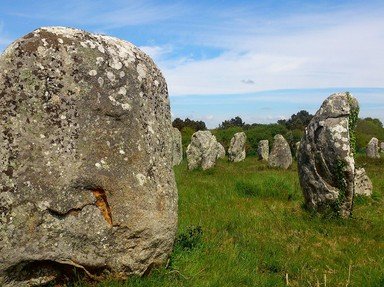Quiz Answer Key and Fun Facts
1. The drums featured in this quiz are attributed to the Dong Son culture, which arose in the Red River Delta area. In what modern country is this located?
2. The Dong Son culture lasted from roughly 1000 BCE until the first century CE. What material, which is usually used to identify cultures of that era in this region, was used to make their drums?
3. What technique did the Dong Son people use to produce the intricate designs on their drums?
4. The Dong Son drums, originally quite small, grew larger over time, with the largest examples standing over a metre in height.
5. Dong Son drums have been found in a number of other locations, indicating that trade and the resulting cross-cultural interactions were a strong feature of the time. Which of these countries has NOT yielded drums in the Dong Son tradition for archaeologists to find?
6. This picture of the detail from a Dong Son drum shows a number of characteristic images. Which of those shown is only found on drums from earliest examples?
7. Excavation of the citadel at Cổ Loa unearthed this drum, one of the largest from the Red River Delta. What was significant about it?
8. This drum was accidentally discovered in 1893 when a dike was being built near the town of Ngọc Lũ. It is considered one of the most important of the Dong Son drums because of its excellent preservation and detail. Which of these makes it unusual when compared to other Dong Son drums?
9. This is the Ho�ng Ha drum, discovered in 1937 near the village of (you won't be surprised to hear) Ho�ng Ha. It is very similar to the Ngọc Lũ drum, but there is one rather intriguing difference. What is happening in the procession panel here that is not seen in the Ngọc Lũ drum?
10. The Song Da drum is another specimen that has an unusual feature. Which of these is it?
Source: Author
looney_tunes
This quiz was reviewed by FunTrivia editor
gtho4 before going online.
Any errors found in FunTrivia content are routinely corrected through our feedback system.
